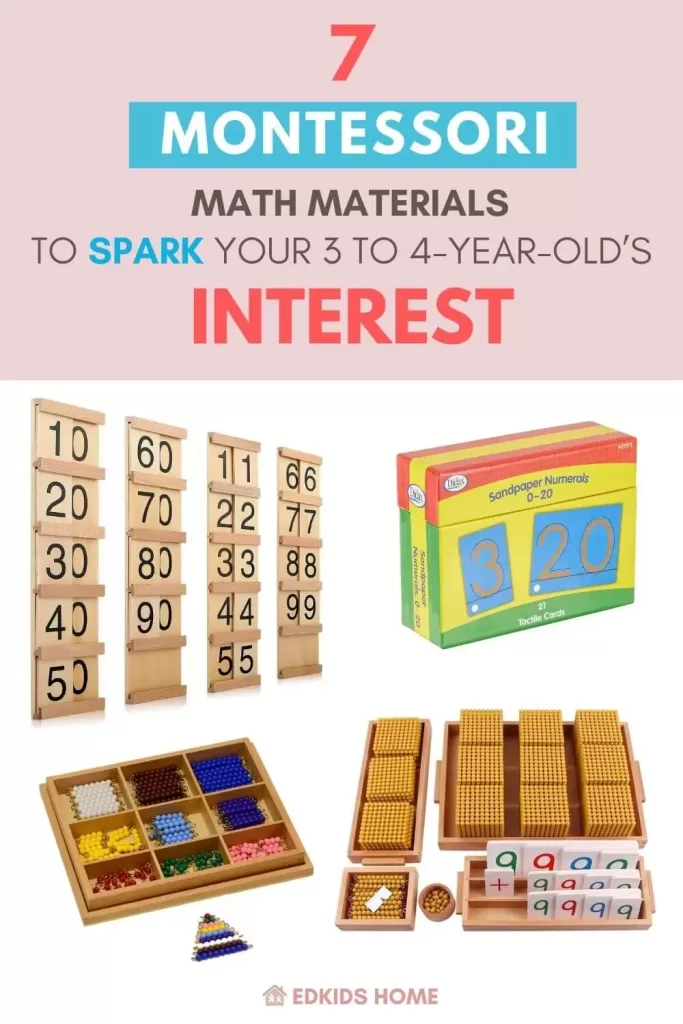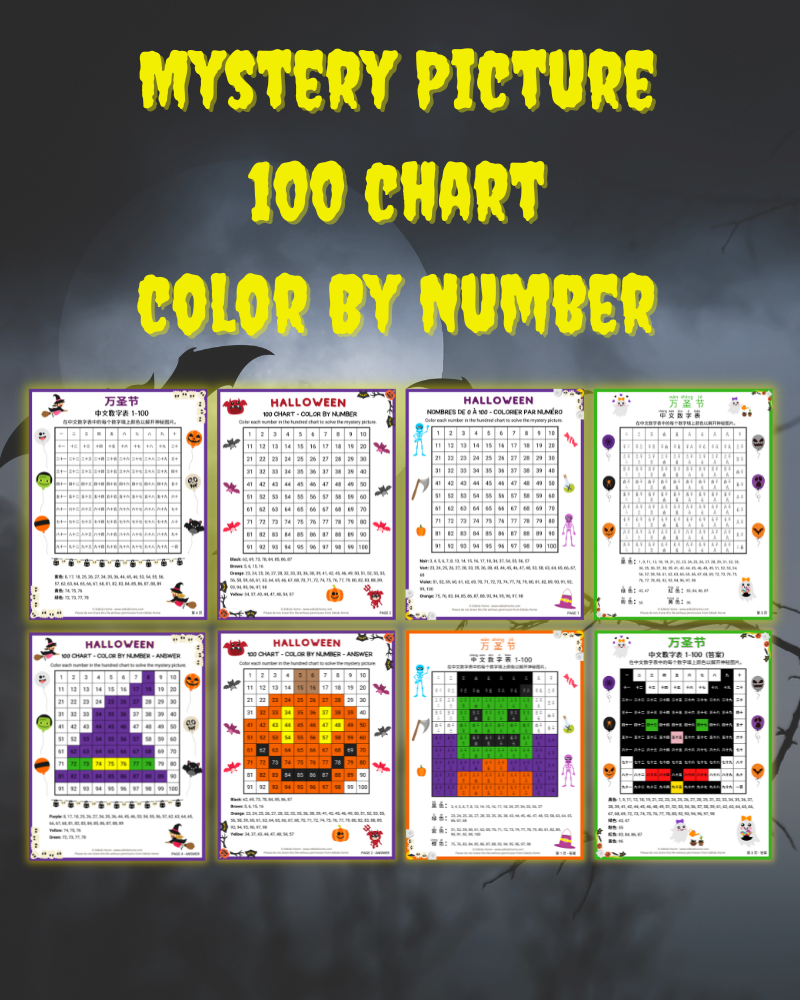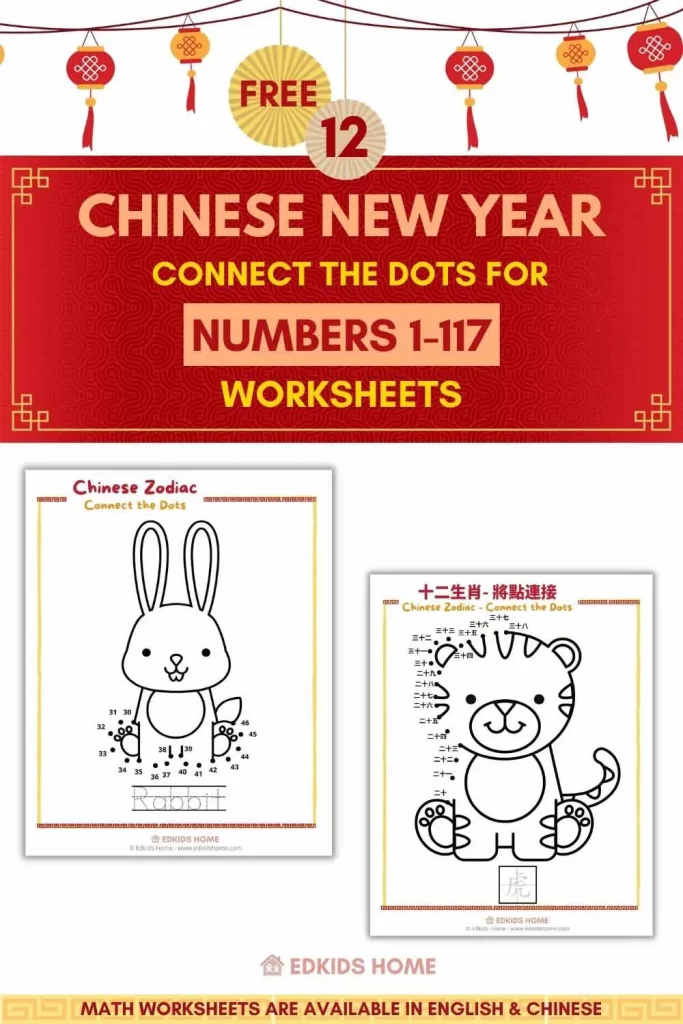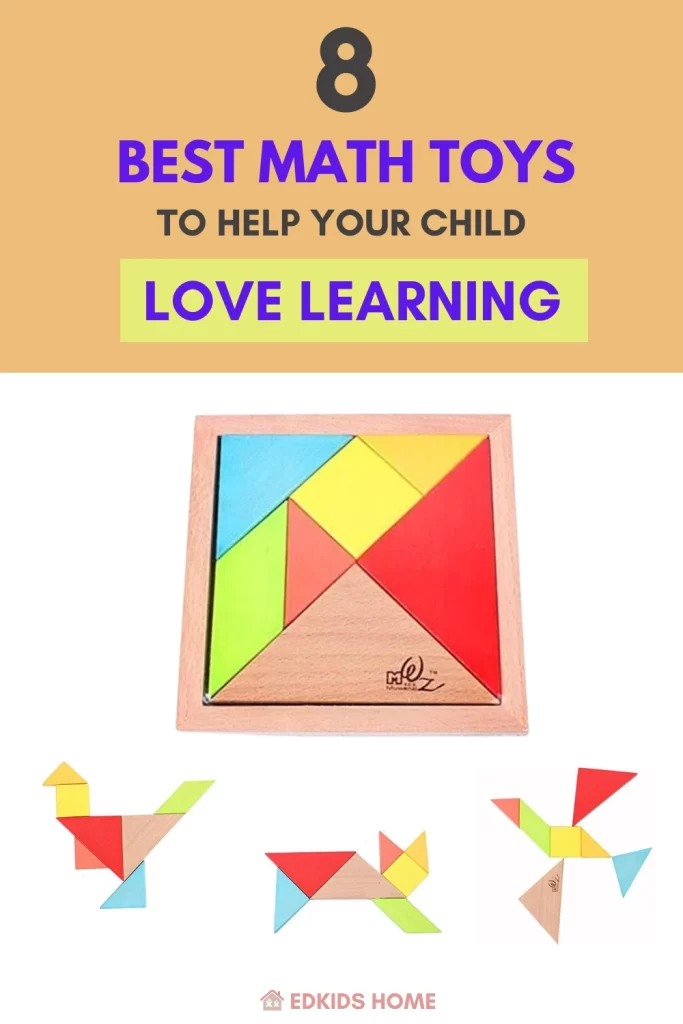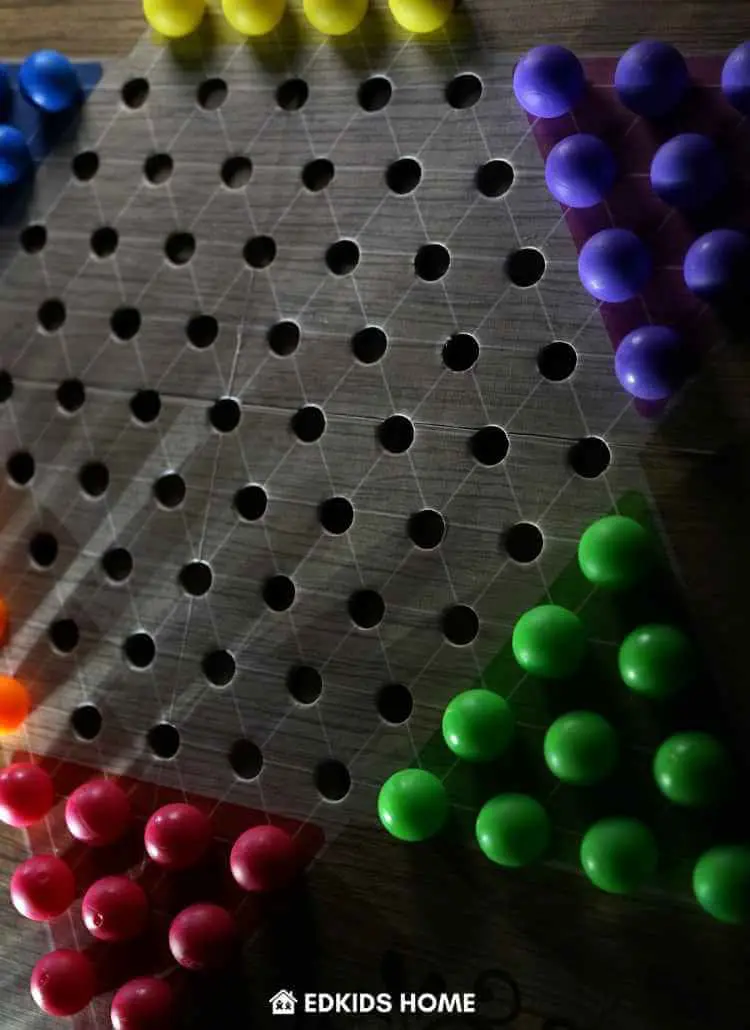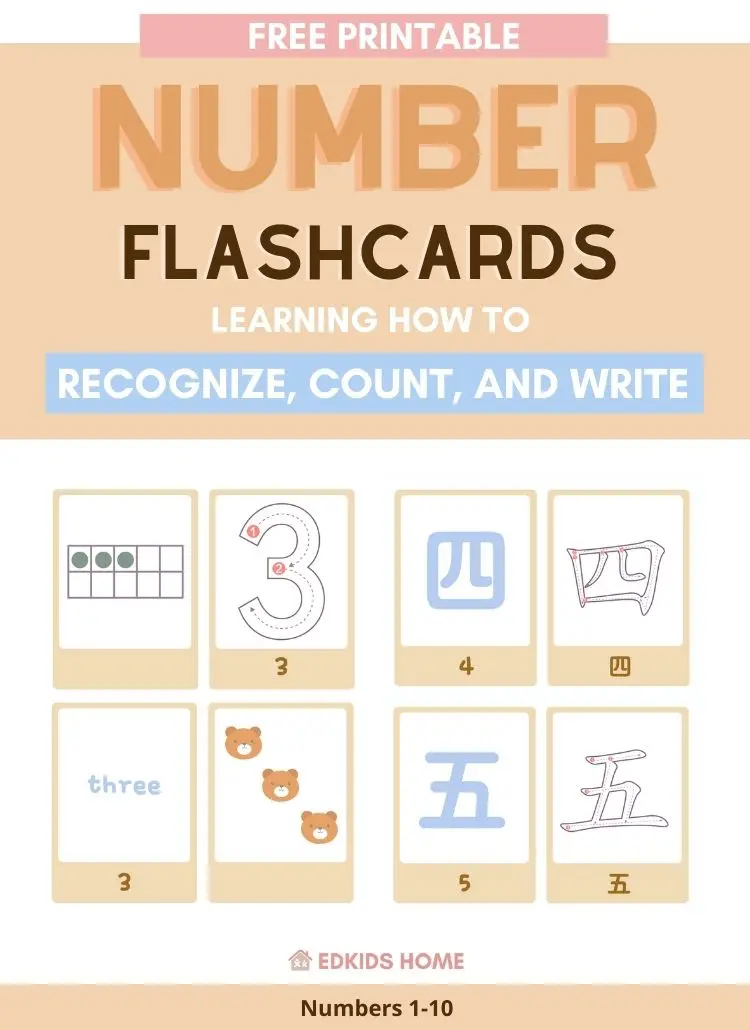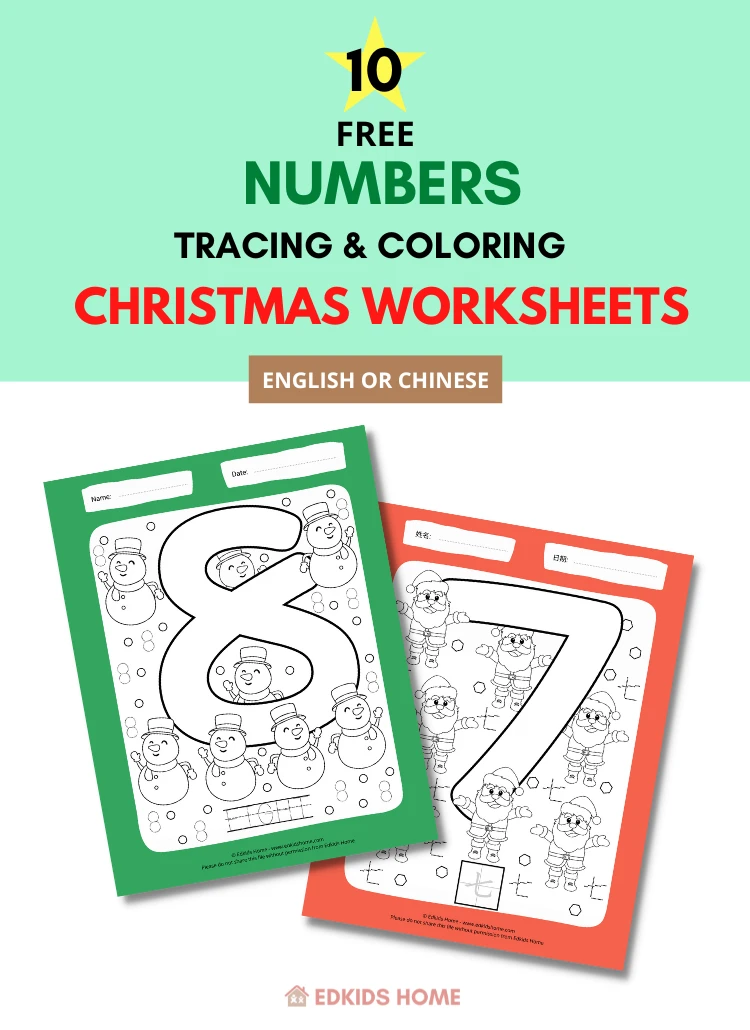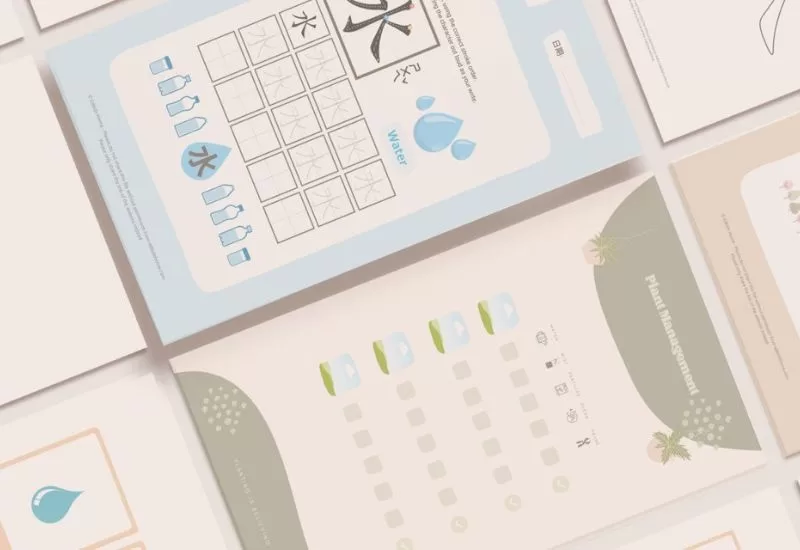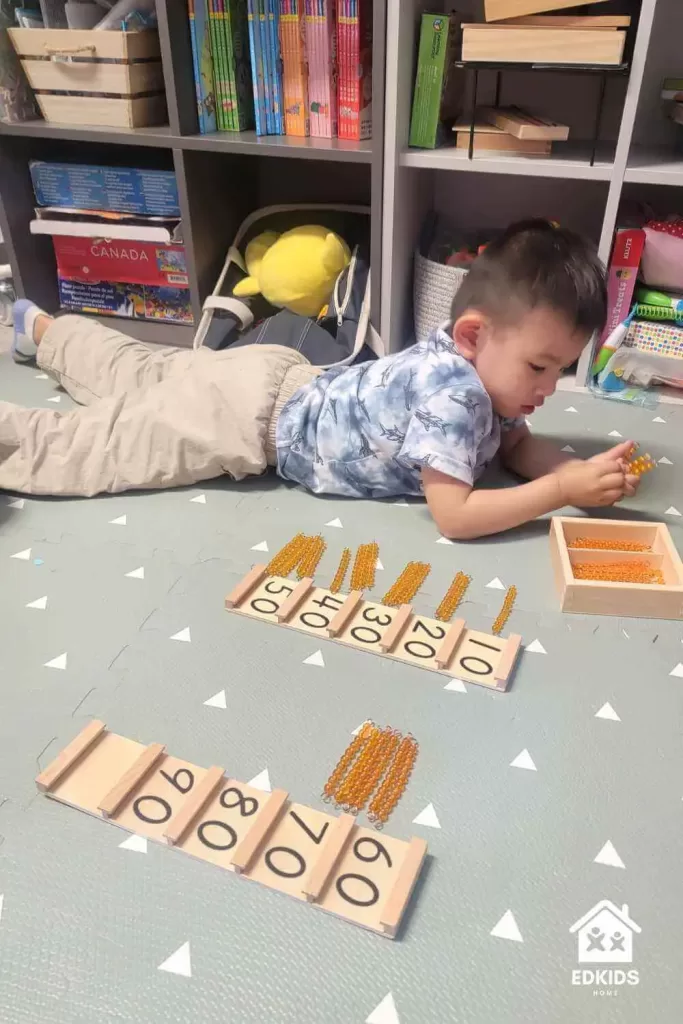
Montessori Math is an amazing and interactive way for children to learn and explore mathematical concepts. Through hands-on activities and the use of concrete materials, children are invited to dive into the world of numbers. If you're a parent or educator, you'll be thrilled to know that certain Montessori Math materials are especially beneficial in creating a nurturing learning environment.
In this article, we'll explore the top 7 Montessori Math materials that have consistently proven to be valuable for developing early numeracy skills for children ages 3 to 4 years old.
Additionally, I'll provide links to direct you where to buy these materials and explore cheaper alternatives. You'll also find tutorials on how to effectively use and present them to your kids.
I'll even share other creative ways to engage your child's curiosity with these Montessori Math materials. And lastly, I'll share our personal experiences with each of them.
Let's dive in and make learning math an exciting adventure!
Our Journey
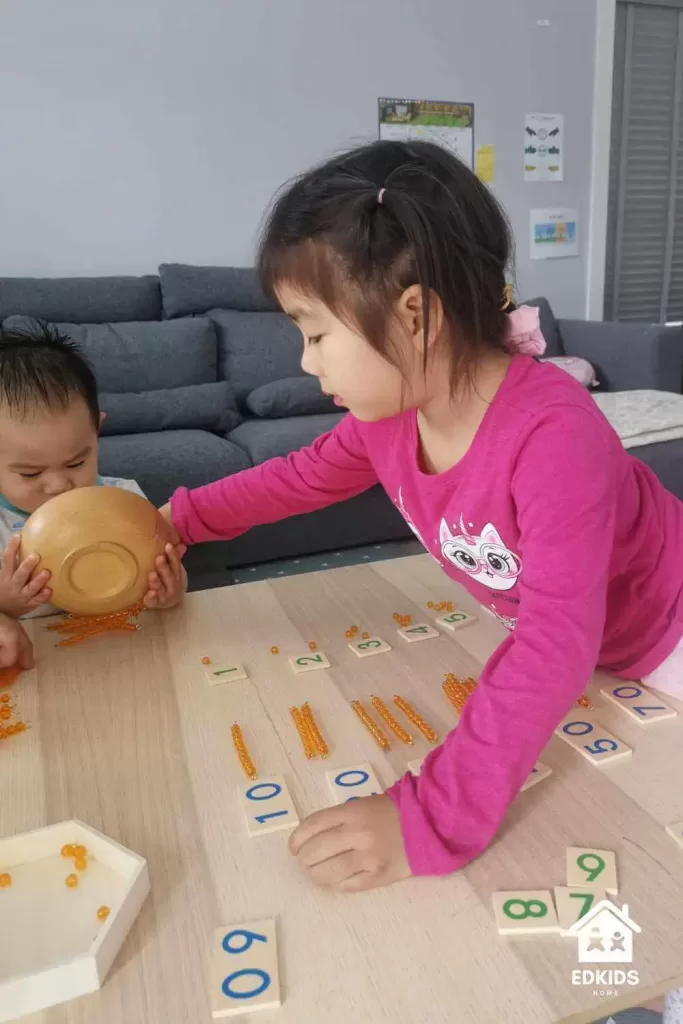
It all started when COVID hit and I was presented with an incredible opportunity to homeschool my daughter for about 1.5 years when she was 3. I delved into the world of Montessori and discovered how I could teach her using this amazing method. I transformed our home into a Montessori-style environment, which has truly empowered my children to grow and thrive independently.
I eventually decided to enroll my daughter in school as I needed to go back to work. However, even though I stopped homeschooling, I still love teaching her Montessori Math after school and on weekends whenever possible. I truly believe that children learn math best when they have the opportunity to explore it in various ways, making it easier for them to grasp the concepts.
I was beyond thrilled to introduce Montessori math to my 3-year-old son, and let me tell you, he absolutely adored it! After school every day, he eagerly reaches for the beads and dives right into the activities. It's truly an incredible experience, and I feel incredibly fortunate to have the opportunity to introduce Montessori math to my children.
How is Montessori Math Different?
Montessori Math is different from traditional teaching approaches, as it encourages children to explore and discover mathematical concepts in a hands-on way. Through the use of concrete materials such as blocks, tiles, cards, and counters, kids can intuitively make sense of numbers and operations.
Moreover, Montessori Math stresses the importance of understanding how math works rather than memorizing facts and formulas. This encourages children to think critically and become more confident in their problem-solving skills.
Why is Montessori Math Effective?
Montessori math helps children build a solid foundation in mathematics, as it allows them to explore bigger concepts almost intuitively. By guiding children through the exploration of materials and activities, kids are able to develop a deep understanding of mathematical principles that will serve them far beyond primary school.
7 Fantastic Montessori Math Materials
There are so many incredible Montessori math materials out there, and it can feel overwhelming trying to get them all, especially since some can be quite pricey.
Cost-Saving Tip: You can even consider buying second-hand materials and selling them later once your kids grow older. It's a win-win situation!
After immersing myself in the Montessori 3-6 Homeschool curriculum and drawing from my own homeschooling journey, I've compiled a list of my top 7 materials that can wonderfully supplement your child's math education. Let's dive in and explore the wonders that await!
1. Sandpaper Numbers
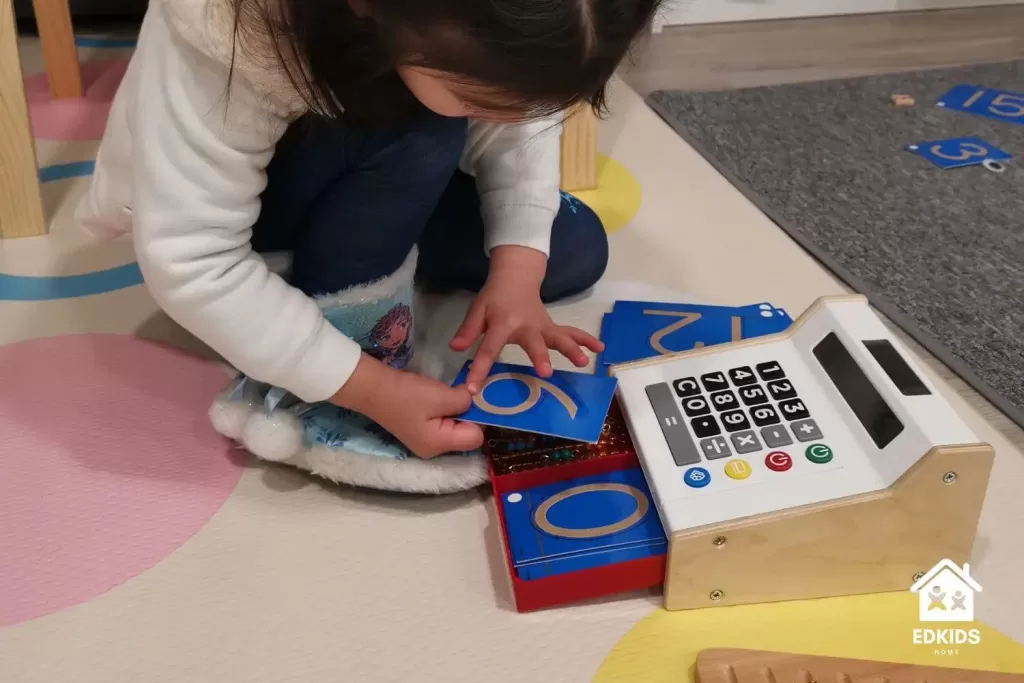
The Sandpaper Numbers are great for introducing numbers and quantities to your toddler. As they trace the numbers with their fingers, they associate each number with a quantity. This helps them to develop a recognition of numerals as well as an understanding of basic counting.
How to Use
Check out how to use the Sandpaper Numbers from the Montessori Primary Guide.
Free Alternative
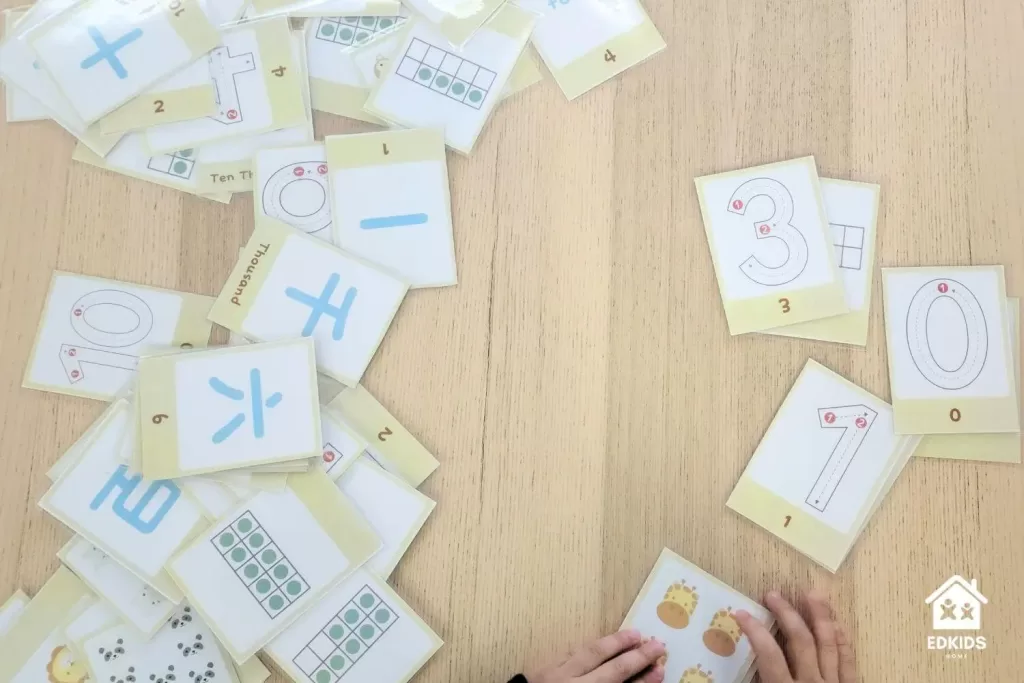
Good news! Edkids Home offers free Number flashcards printable! They are a great way to introduce the concept of counting. This flashcard set features both English & Chinese versions (Traditional, Simplified, Pinyin, Zhuyin, and Jyutping Chinese). The cards range from 0 to 10 and have four distinct sets of flashcards for each number:
- Ten Frame
- Number (With Stroke Order)
- Word
- Picture
Some ways of using sandpaper numbers
Here are some of the examples for using sandpaper numbers for our learning sessions.
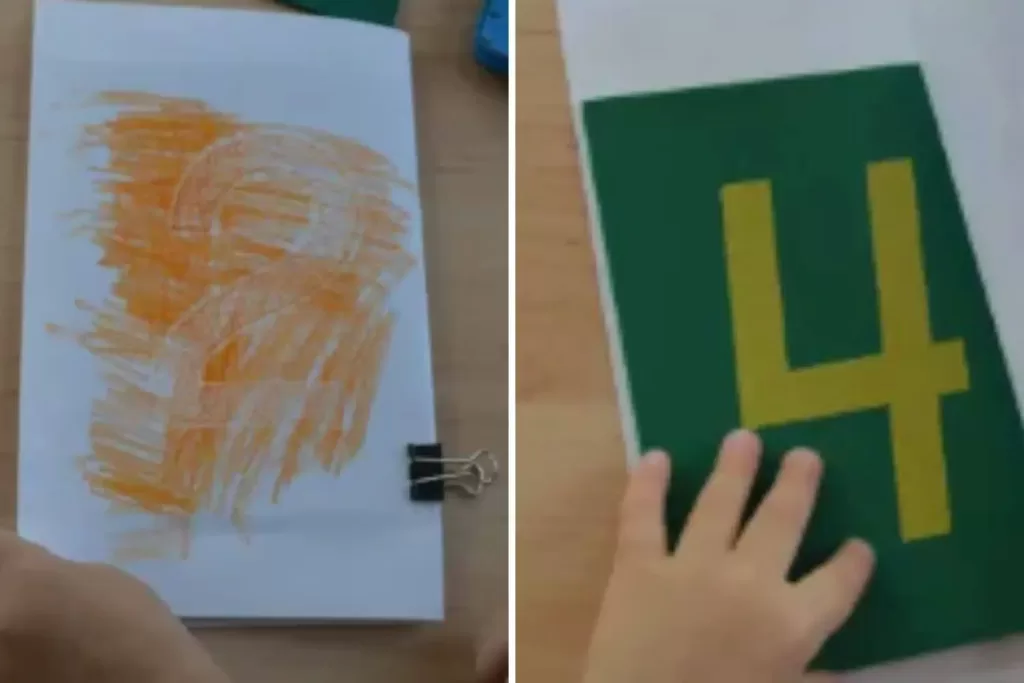

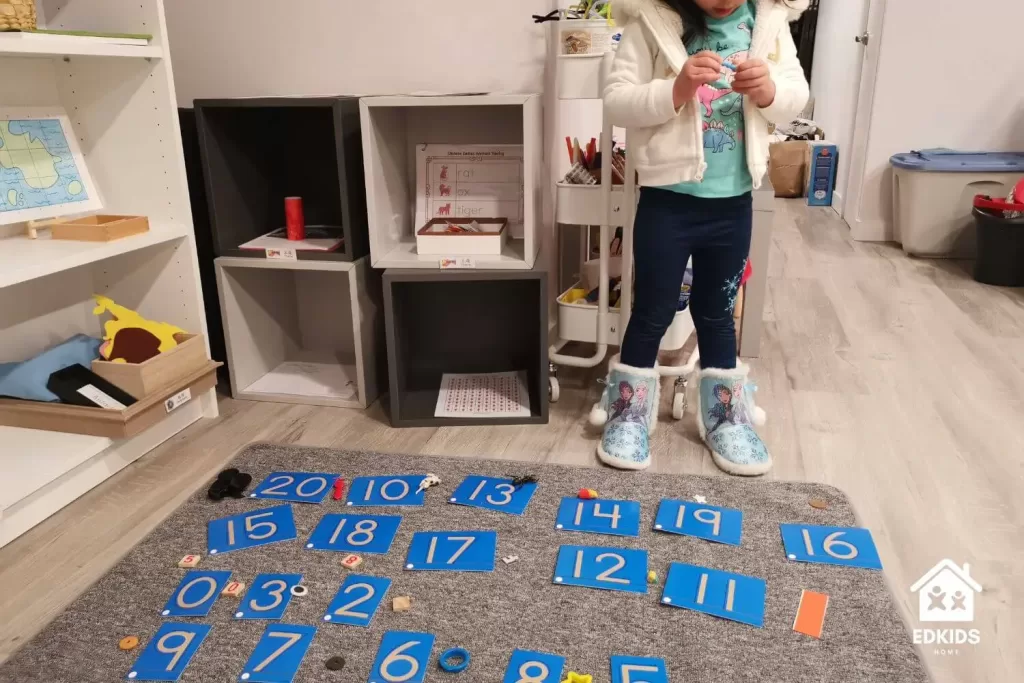

Our Experience
We absolutely love using these sandpaper numbers in our math activities! They provide the perfect opportunity for my little ones to learn how to trace each number in the correct stroke order, even though they're still too young to write. It's such a fun and effective way for them to develop their number skills!
2. Counters/ Loose parts
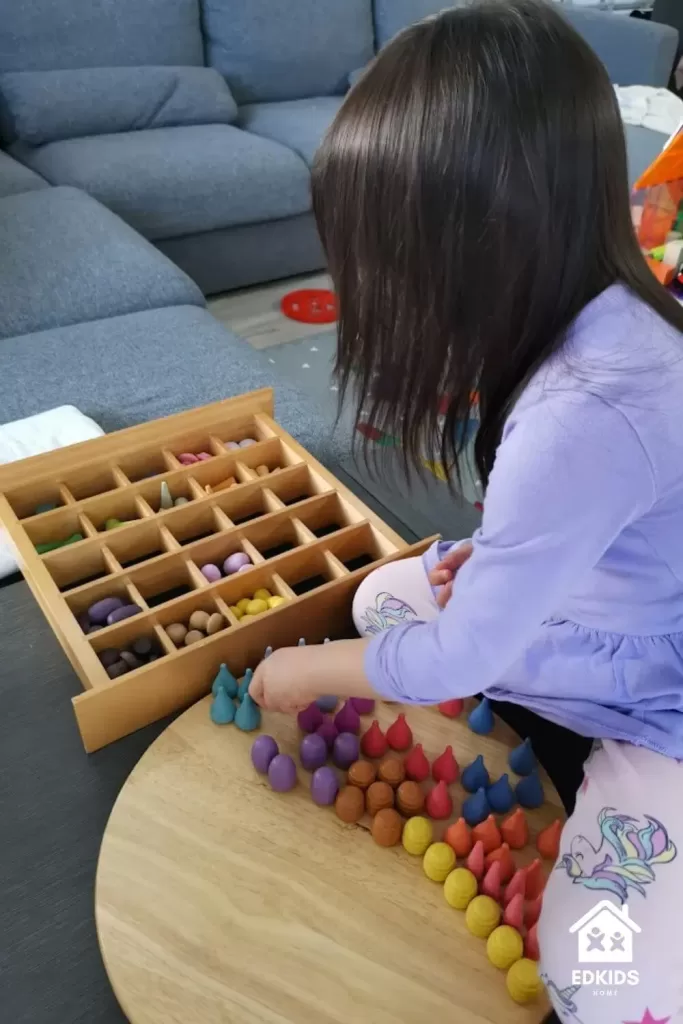
Counters/loose parts are small objects, typically beads and coins, used to illustrate numerical operations. They come in sets of 10 or 20 and can be used to create a variety of visual patterns. Kids learn to differentiate between different kinds of counters and use them to count up and practice addition or subtraction.
Other Alternatives
How to use
Montessori Primary Guide provides tutorials on how to present and use cards and counters.
Some ways of using Counters/loose parts
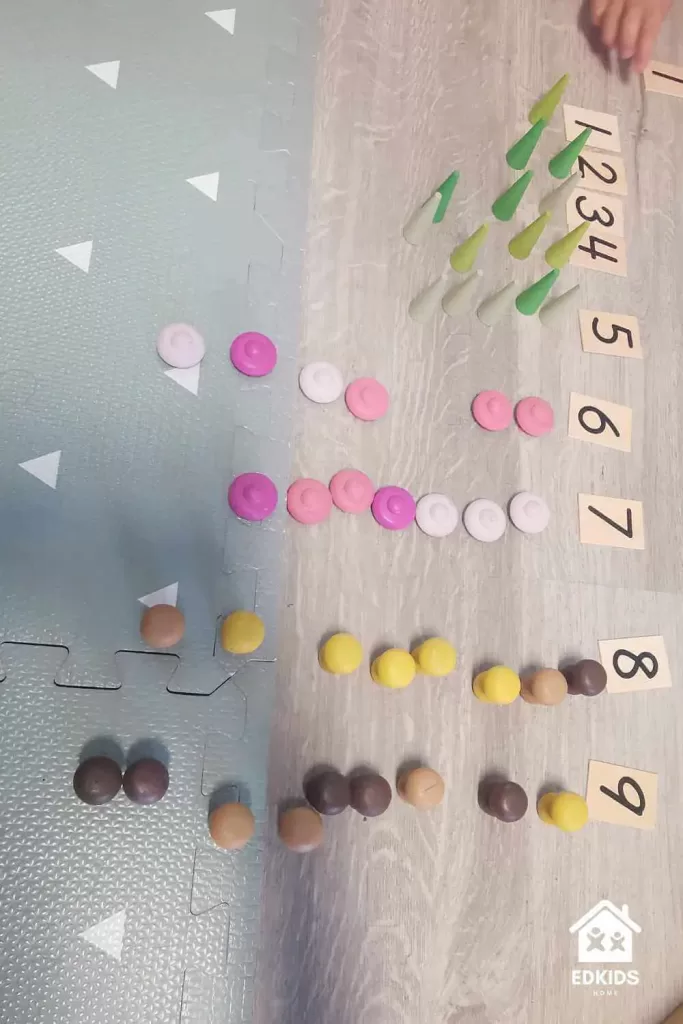
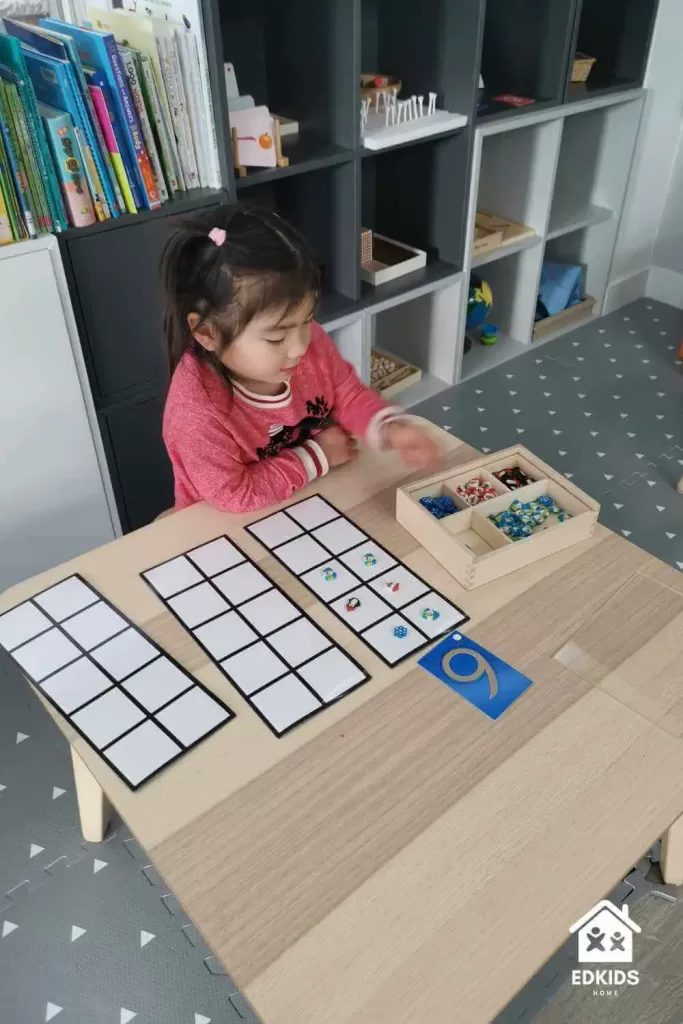

Our Experience
We have a wide range of options when it comes to using counters! I love providing multiple sources so that kids can explore different types of counters, depending on the theme. It's a great way to keep things fun and engaging!
3. Decanomial Bead Bars
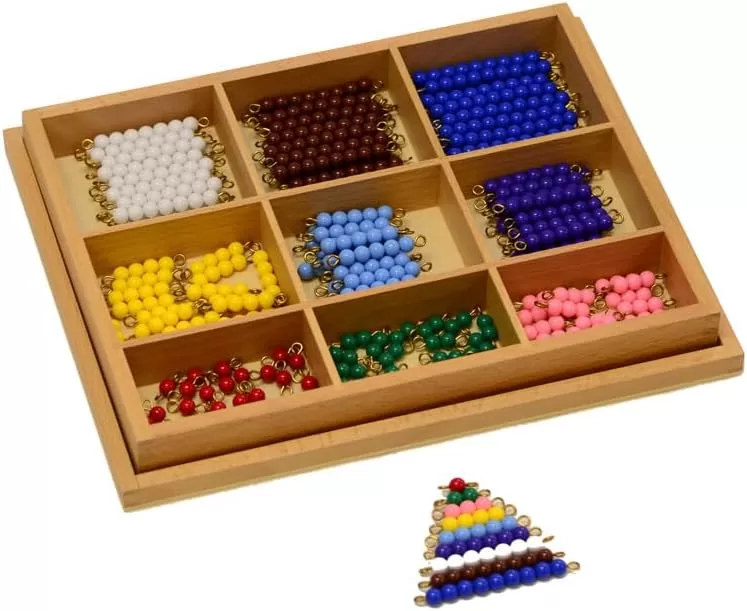
The Decanomial Bead Bars are an amazing tool! Your child will have a blast using them to delve into a wide array of math concepts. They'll explore everything from addition and multiplication to arithmetic relationships like multiples and squaring. These beads also help them understand concepts of equality and even polynomial expansions.
Cost-Saving Tip: Blocks and Beads can teach you how to make your own bead bars.
How to Use
Guide Post Montessori explains to you how to use and set up the Decanomial Bead Bars.
Montessori Primary Guide explains how to present and teach the bead bars as teen numbers.
Some ways of using decanomial bead bars
Here are some examples of using the bead bars and we have been using them for more than 4 years!
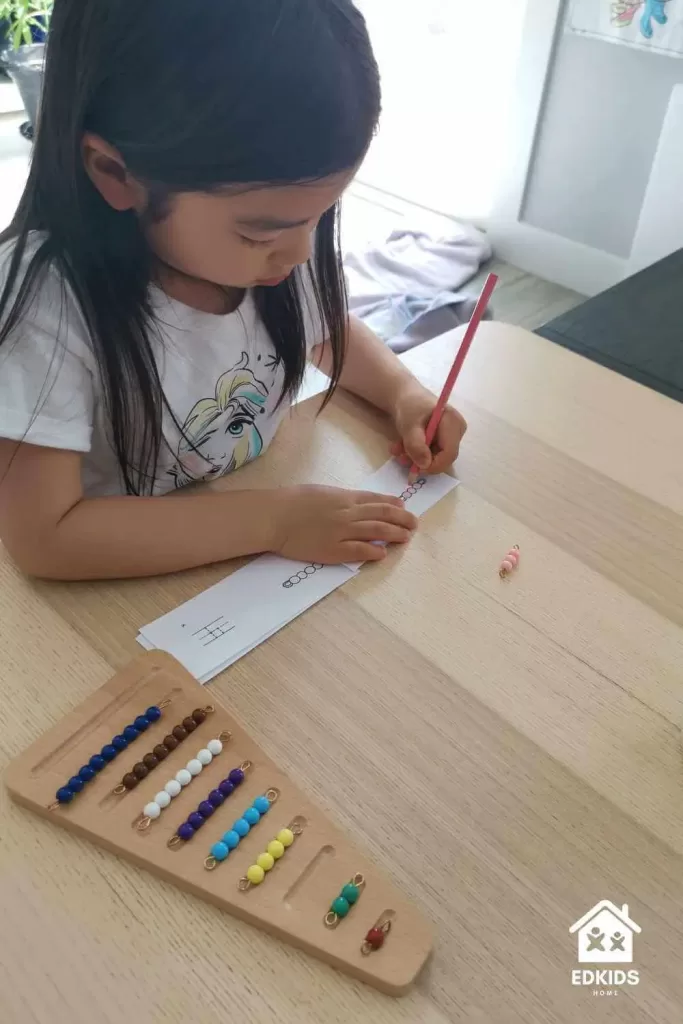
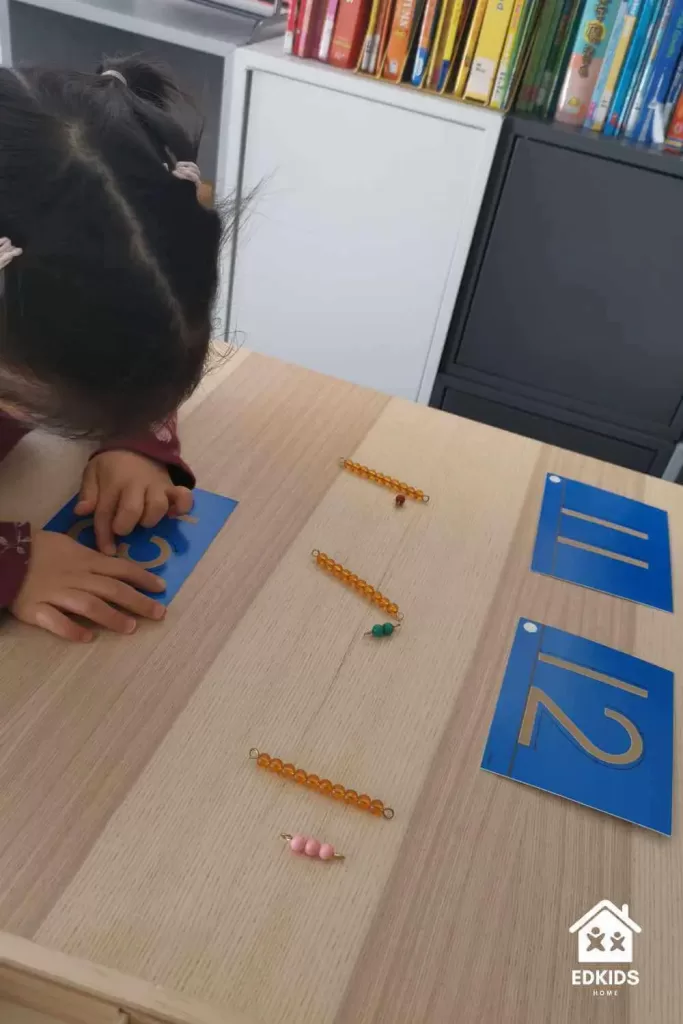
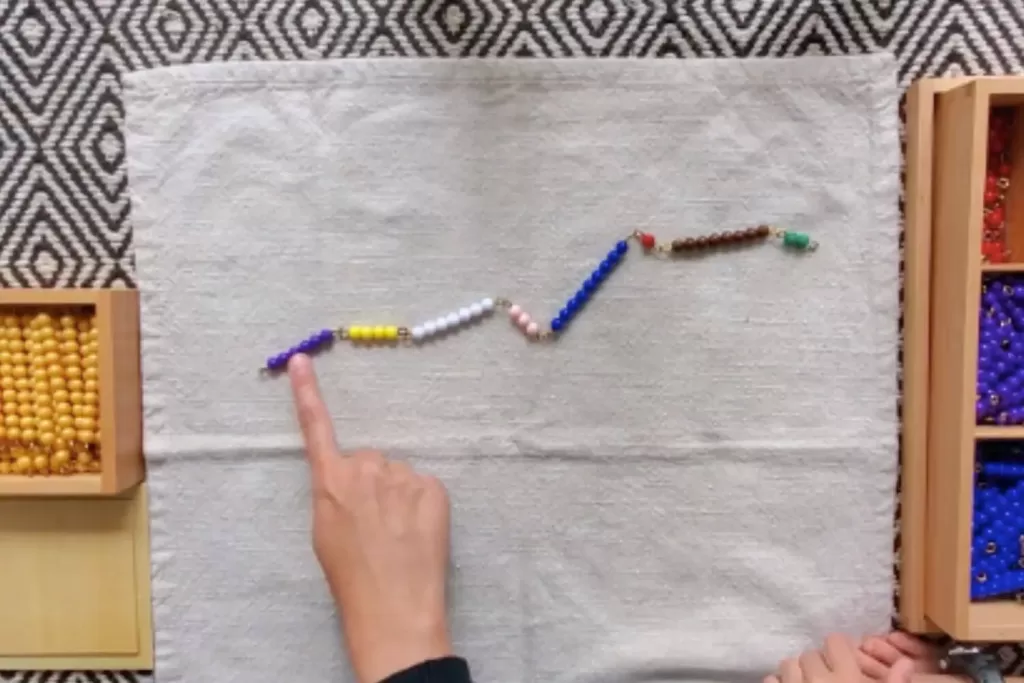
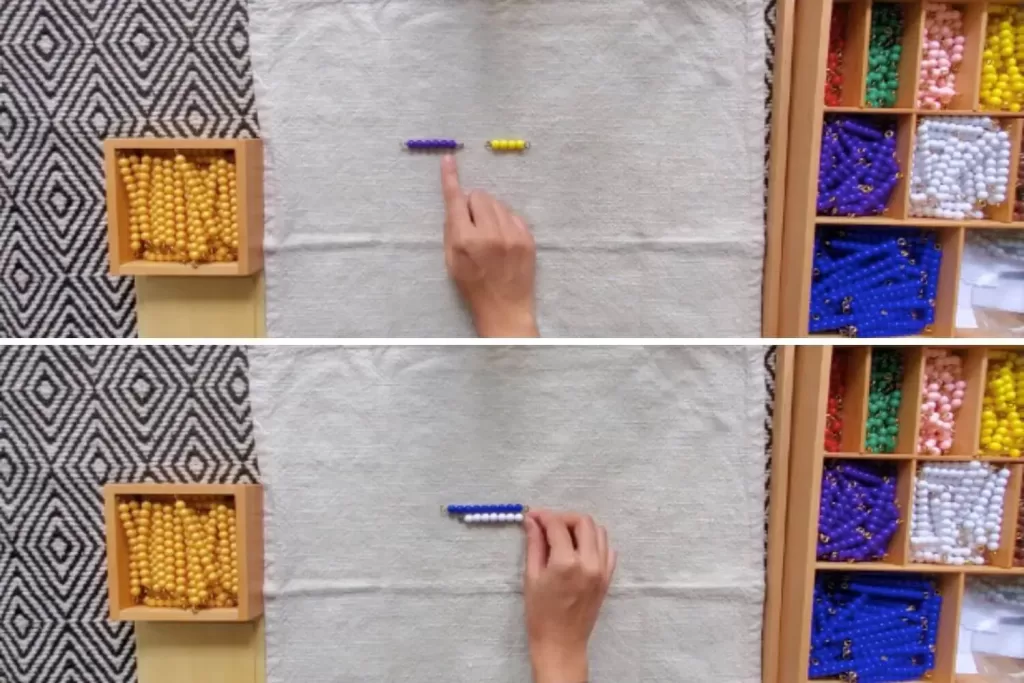
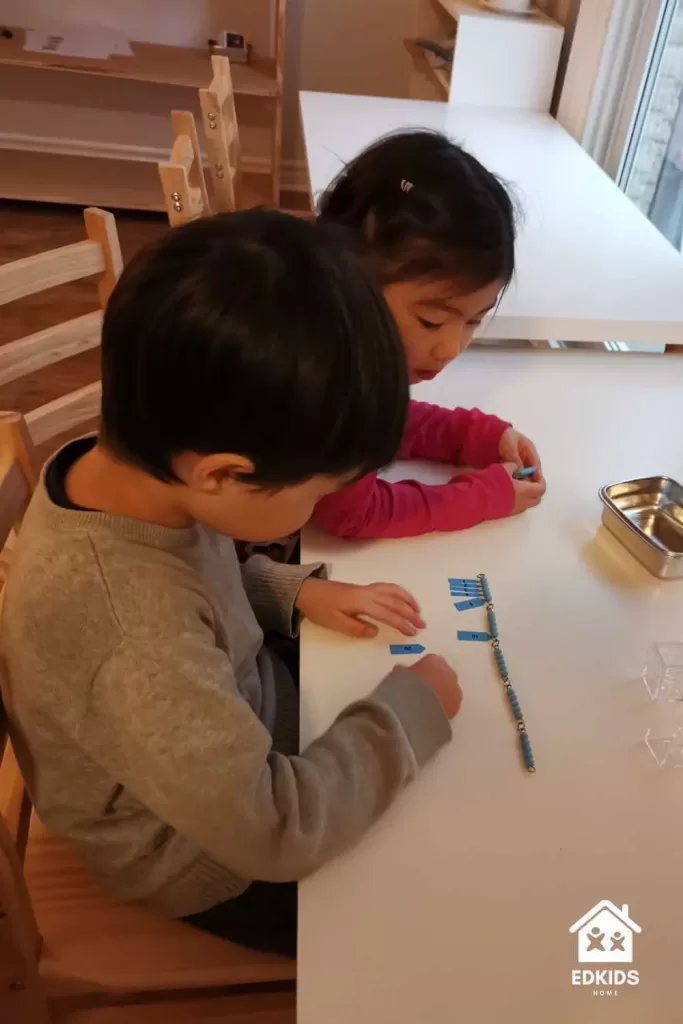
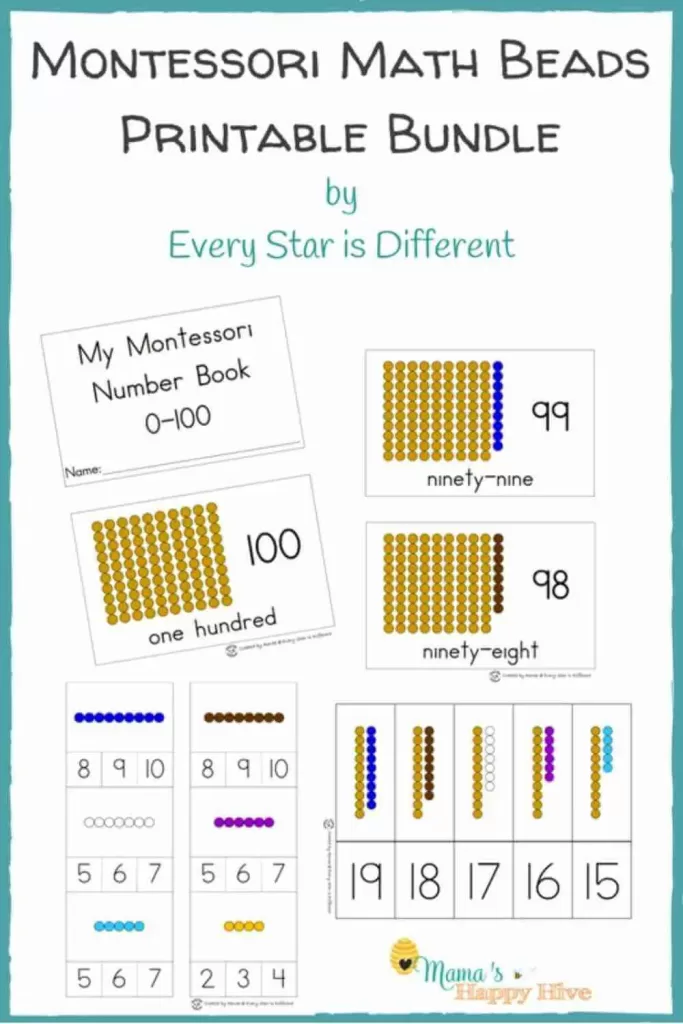
Our Experience
I absolutely love these bead bars! We've been using them for years, and what I love most is their incredible versatility. When my daughter was just 3 years old, I began teaching her how to count from 1 to 10 using these bead bars. As she grew older, we moved on to counting the teen numbers. Now, my son is benefiting from these lessons, using the bead bars to learn multiplication. It's truly amazing how effective they are. They offer a practical learning experience that goes beyond the conventional approach of learning math through paper and pencil.
4. Teen & Ten Board
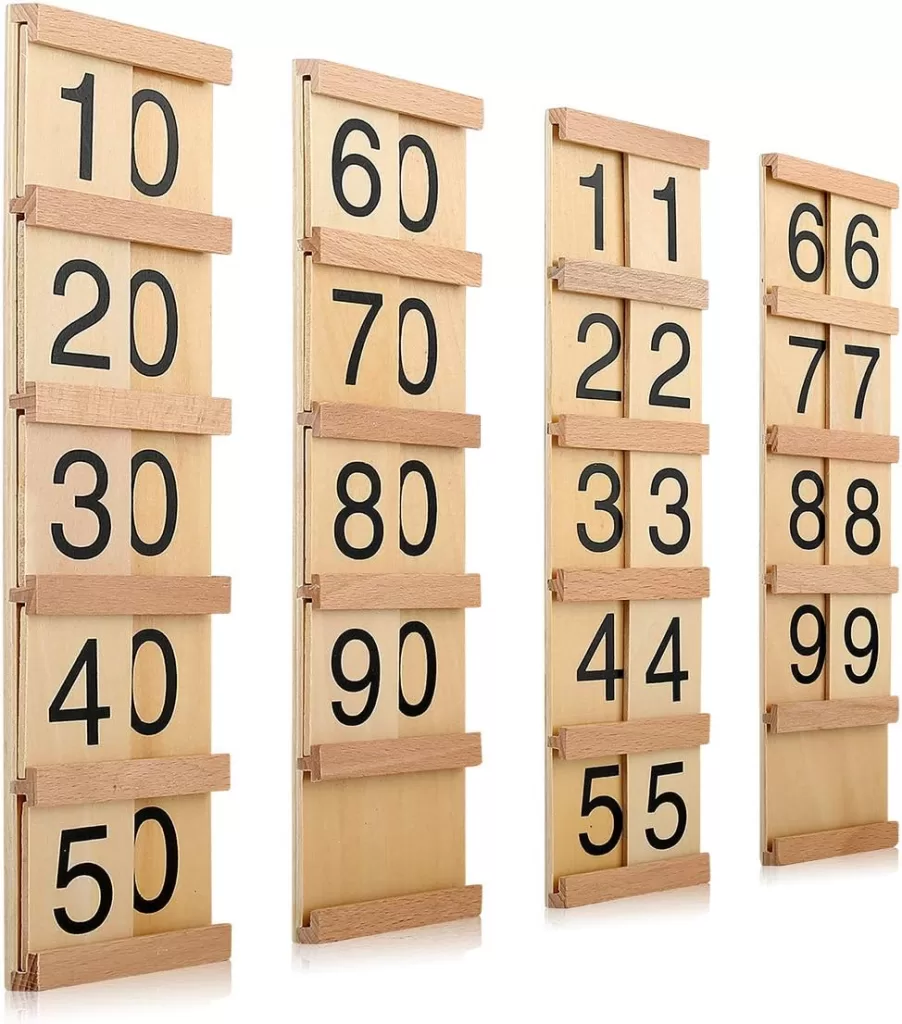
The Teen & Ten Board has been a favorite of mine for years! Kids can use this board to learn how numbers are formed by combining the teens (10-19) and tens (20-99). This helps them to visualize number patterns and develop an understanding of place value.
Cost-Saving Tip: Learn how to make your own DIY Teen & Ten boards from the Pinay Homeschooler
How to Use
The Pinay Homeschooler display a simple walkthrough on how to use Montessori Teen Boards.
Carrots are Oranges shows you how to present Montessori Tens Board.
ways for using teen & ten boards

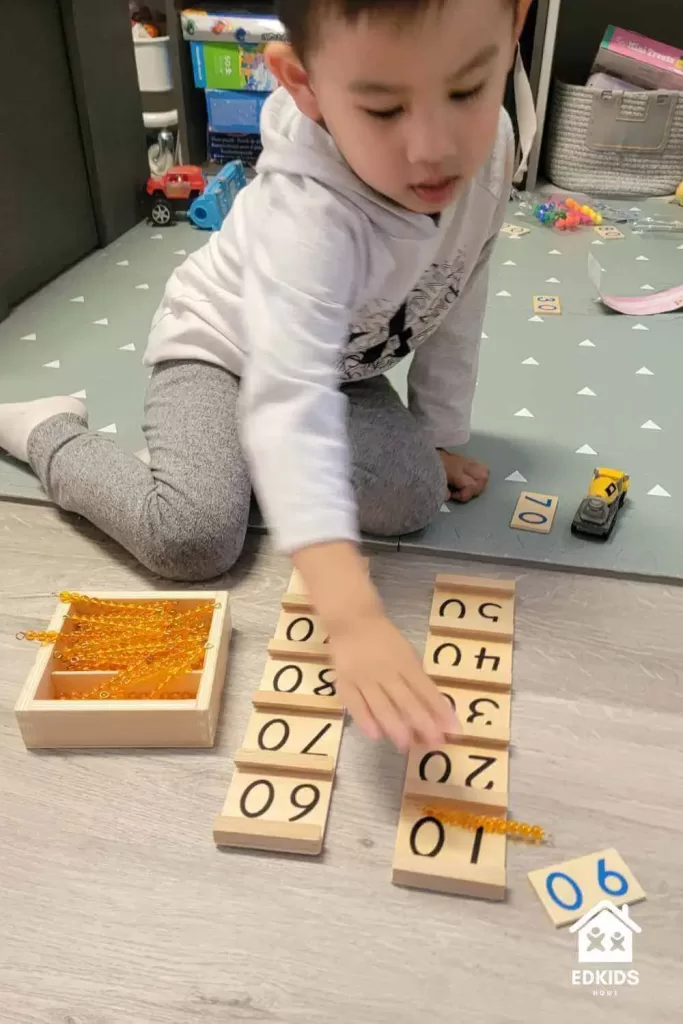
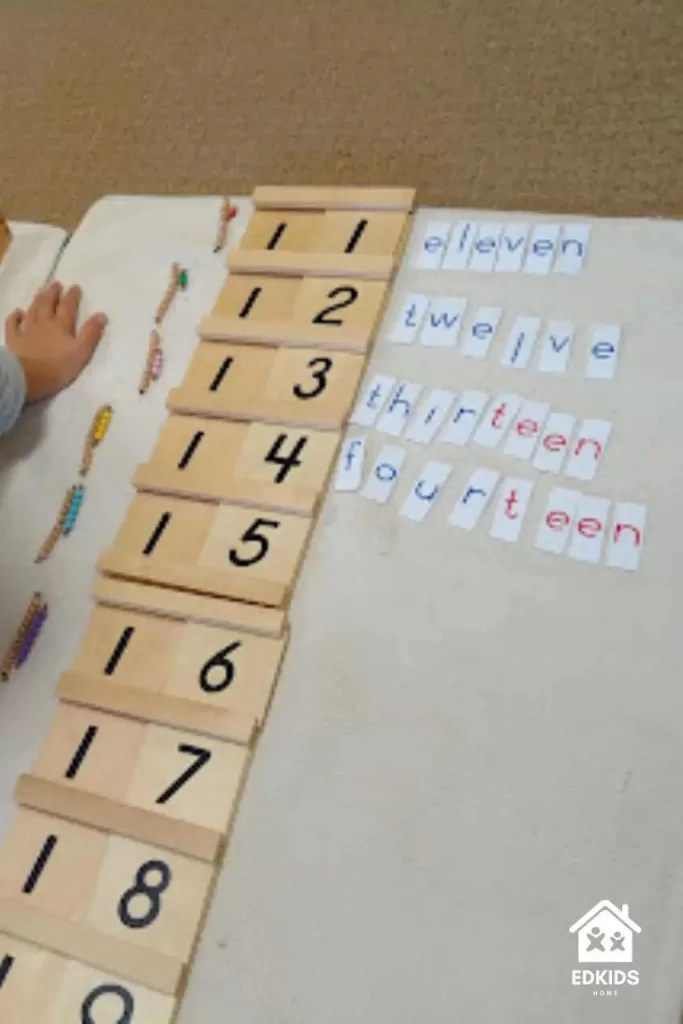
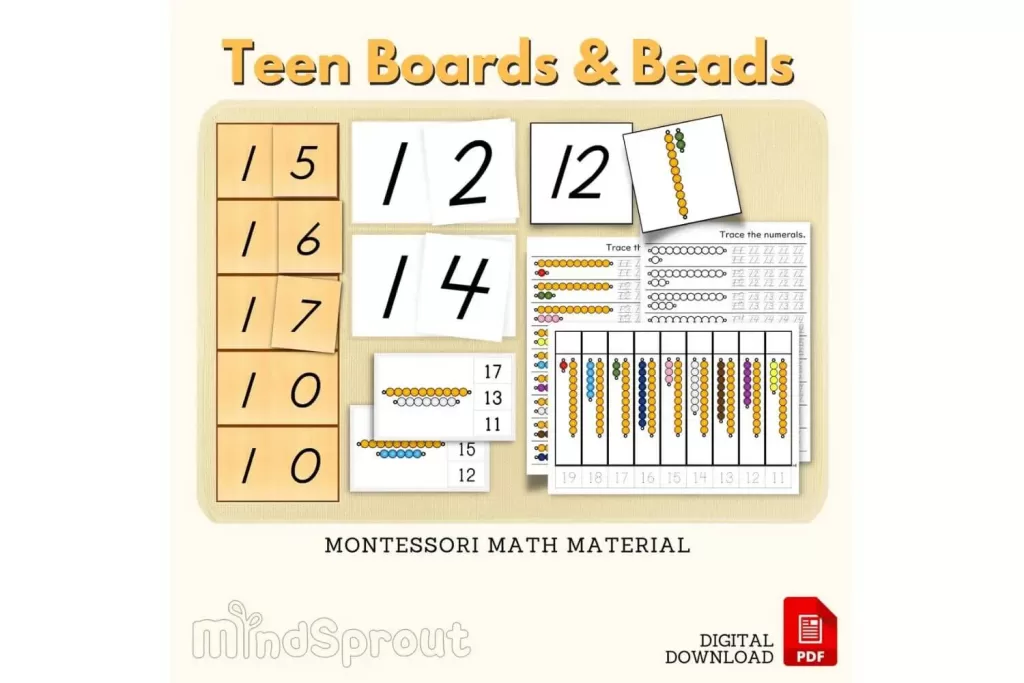
Our Experience – Teen Board
After my kids learn how to count from 1-10, then it's the teen numbers which I believe are much harder than learning Chinese teen numbers.
In English, the naming convention for teen numbers can confuse learners as it lacks consistency. For instance, “eleven” and “twelve” have unique names, and numbers from 13 to 19 are pronounced with the unit's place before the tens place, like “fourteen” (4 then 10) or “seventeen” (7 then 10).
In Chinese, the numbering system is logical. The teen numbers are named by combining “ten” (十) and the unit's place. For instance, thirteen is 十三, which means “ten three”. This simplicity and logical structure make learning and remembering the teen numbers in Chinese easier compared to English.
This board really helps my kids to understand each teen number, especially in English along with other tools with bead bars.
Our Experience – Ten Board
We actually started using the ten boards in parallel with the teen boards. I think it is easier to learn the tens than the teens when it comes to English. We also incorporate the decimal material set to use these ten boards.
5. Decimal Material Set
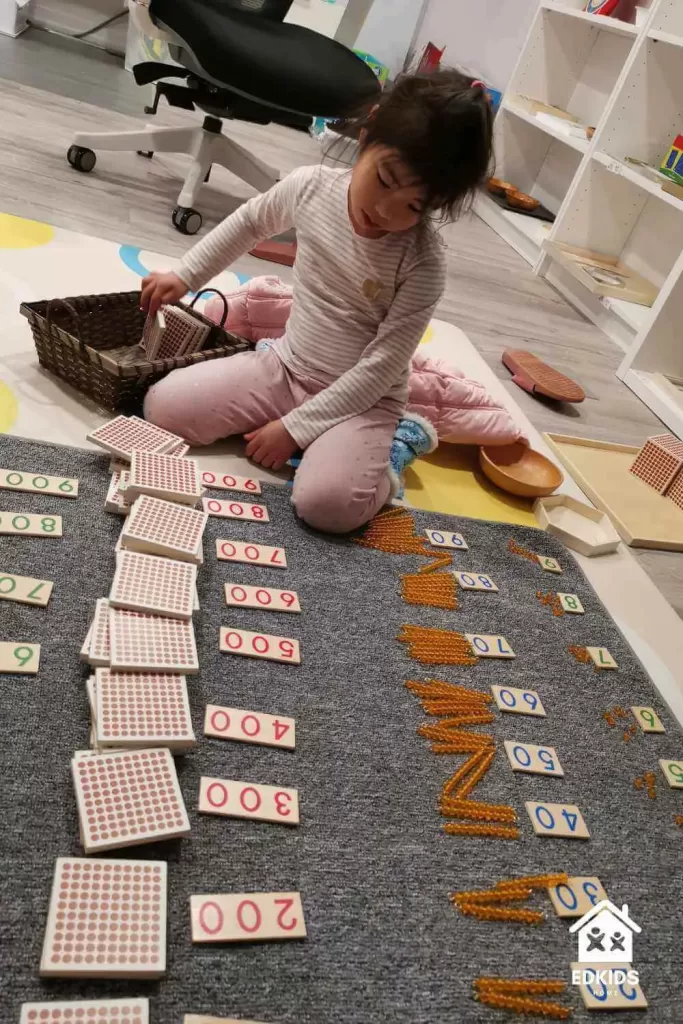
The Decimal Material Set is a great way to introduce kids aged 4 and up to the concept of decimal numbers. This set comes with wooden pieces that represent decimal fractions, which can be moved around to create larger numbers. Kids learn to differentiate between whole and decimal numbers while gaining an understanding of their place values.
How to Use
The Pinay Homeschool has a tutorial of using the Decimal Material Set.
ways you can use the Decimal Material Set


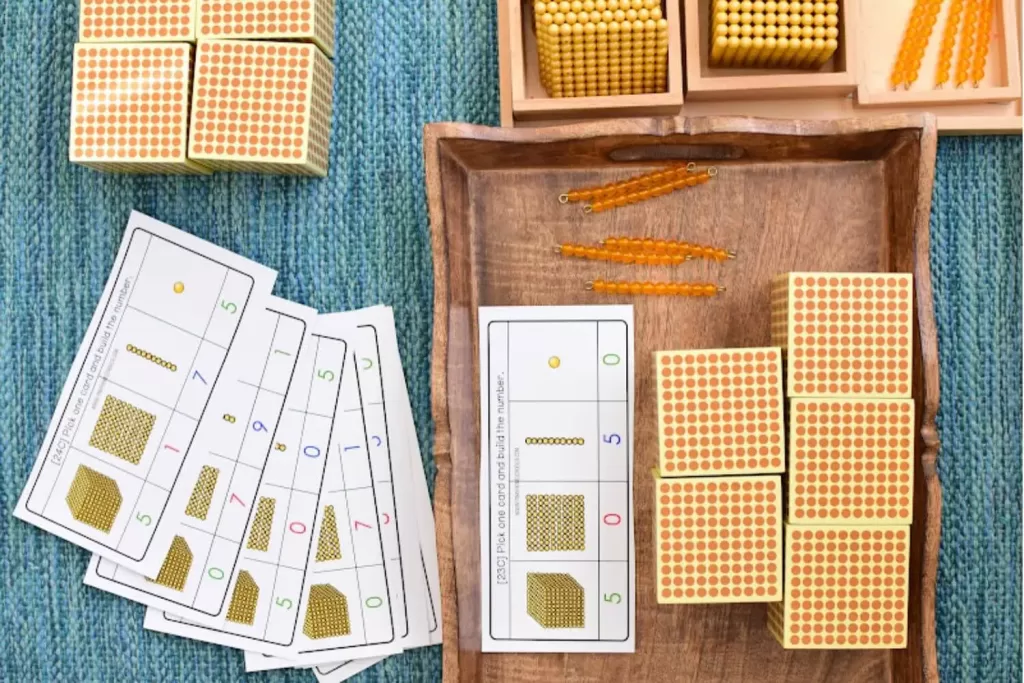
Cost-Saving Tip: Follow the Child with Wonder can teach you how to make your own DIY Decimal Material Set.
Our Experience
This collection is absolutely the most expensive Montessori math material in my collection, no doubt about it! Believe me, it's totally worth it! Once they grasp how to use this set, we incorporate it into fun and enjoyable games, like a shopping game. It's all about reinforcing learning through play and making sure the kids have an amazing experience!
6. Hundred Board
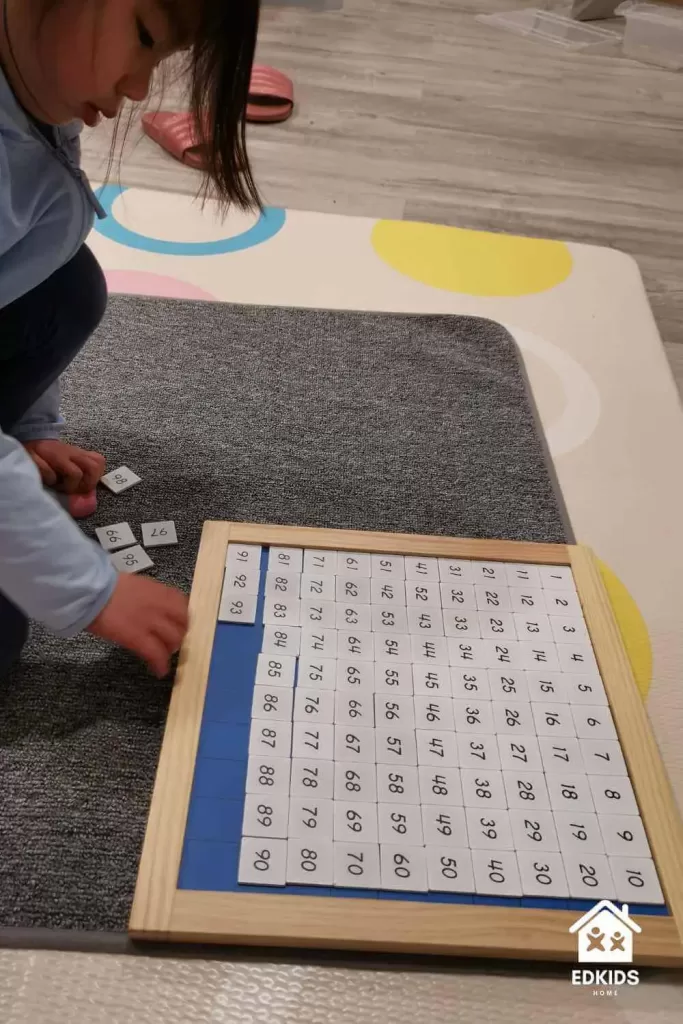
The Hundred Board is a great tool for introducing kids to the concept of multiplication and division. It is a large board with numbers from 1-100 laid out in an orderly fashion. Kids can use counters or stones to illustrate numerical operations on the Hundred Board, helping them to understand how multiplication and division work.
Other Alternatives
Cost-Saving Tip: Chalk Academy also made a Hundred Chart printable available in English, Chinese, and Korean.
How to use
The Pinay Homeschooler described how to introduce the Montessori Hundred Board for Preschoolers.
Ways of Using the Hundred Board
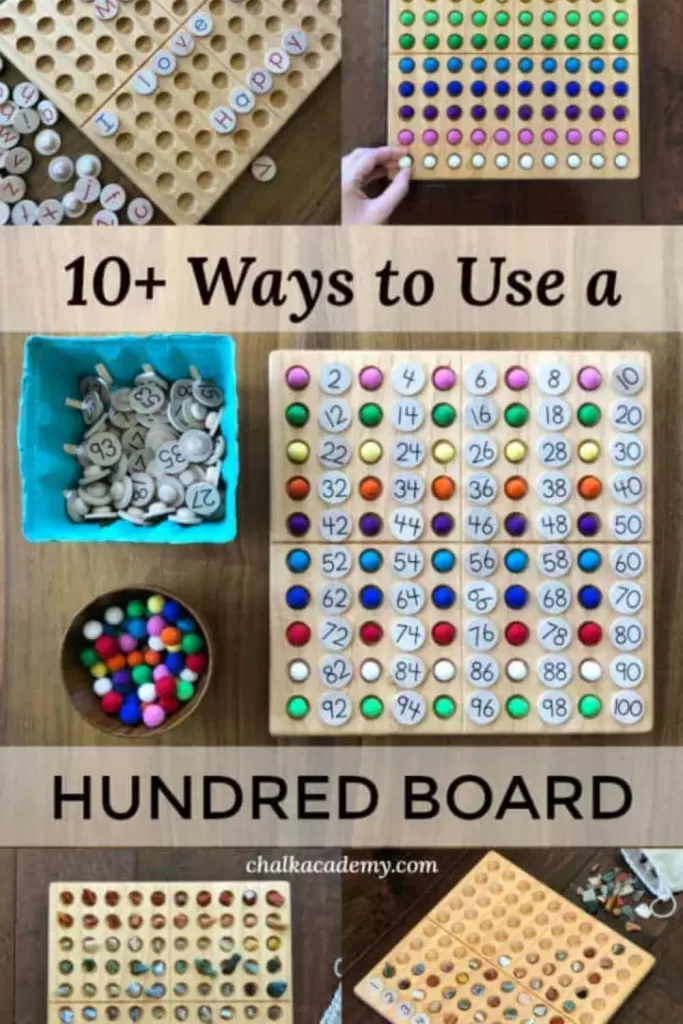
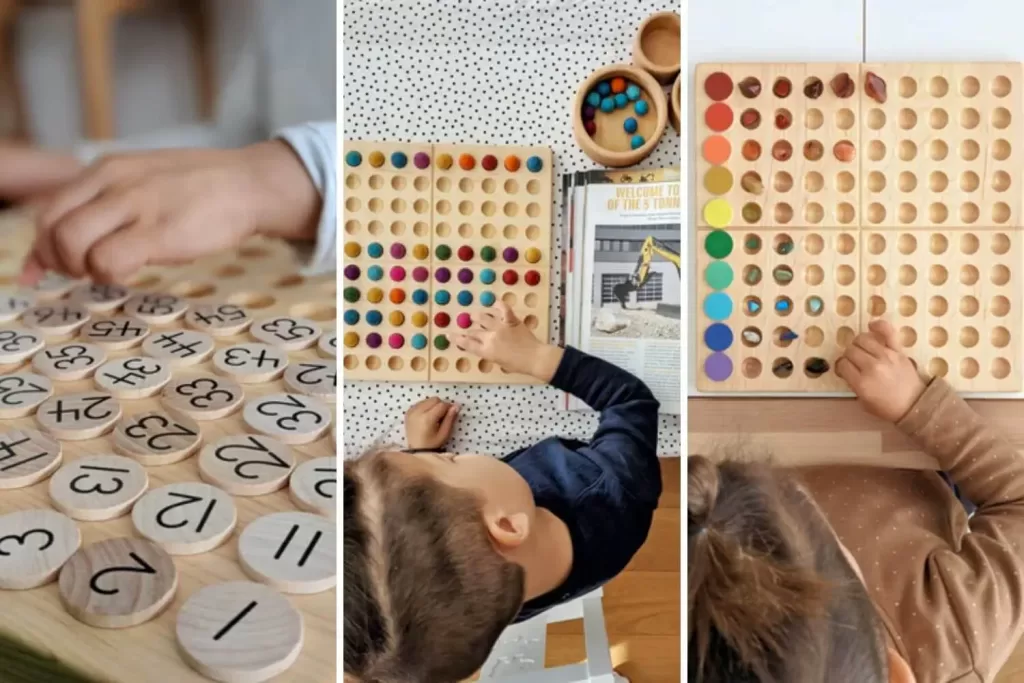
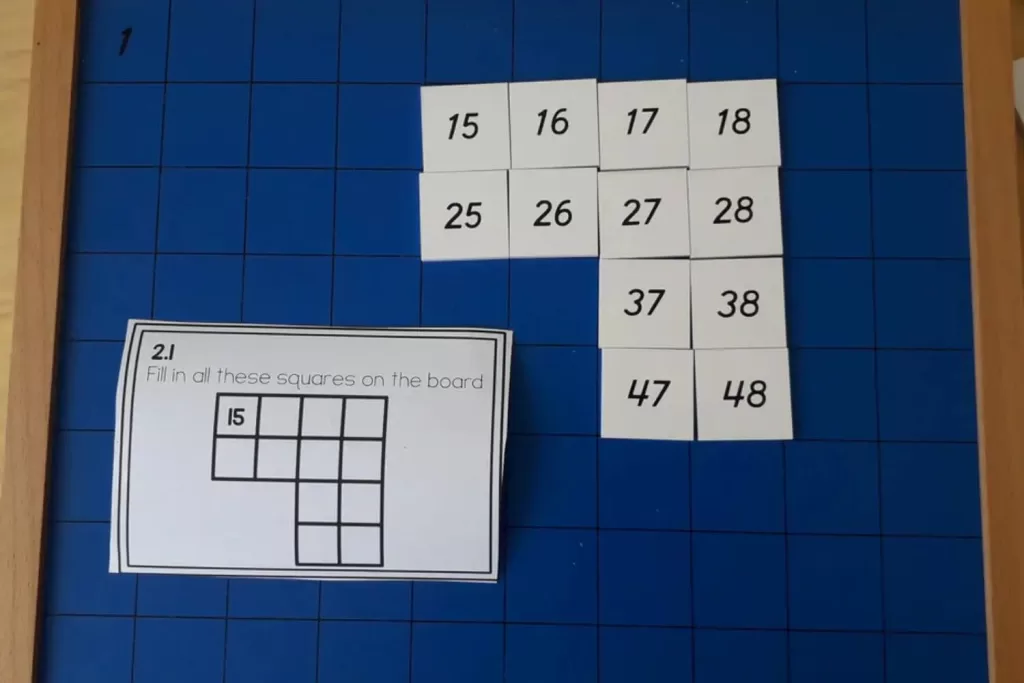
Our Experience
The hundred board is absolutely amazing! My kids are completely fascinated by the number one hundred! There's just something about it that sounds so incredible to them. At first, they didn't really grasp the concept of how big one hundred is, but then I introduced them to the hundred board, and it all clicked! My daughter loves counting from one to one hundred using the board. It does take some patience to go through all the numbers, but it's truly rewarding once they complete it. It's such a fun and educational activity!
7. Geometric Insets
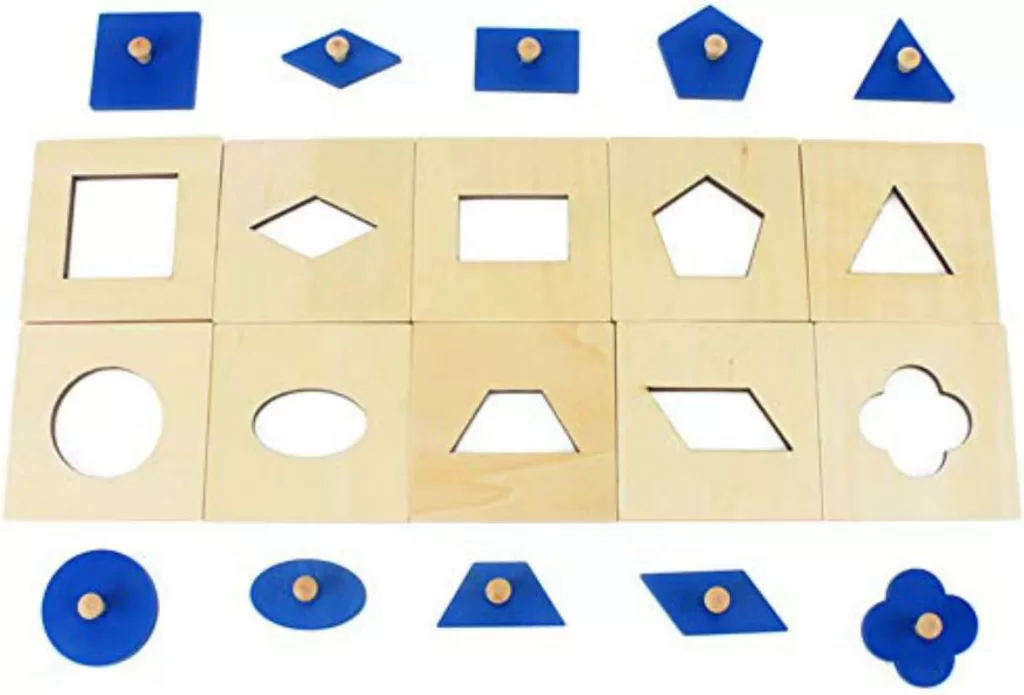
The Montessori Geometric Insets are an amazing learning tool that sparks a child's creativity while introducing them to a wide range of geometric shapes. These insets serve as a captivating link between the abstract world of geometry and the child's hands-on experience. With ten different shapes and corresponding frames, children can trace and explore, fostering the development of fine motor skills and a deeper understanding of geometric properties. Not only that, but these insets also prepare children for writing by promoting proper pencil grip and control. Montessori geometric insets offer a comprehensive educational journey, seamlessly blending math, art, and language in an engaging and enjoyable way. Let the learning and fun begin!
Other Alternatives
Ways of using geometric insets
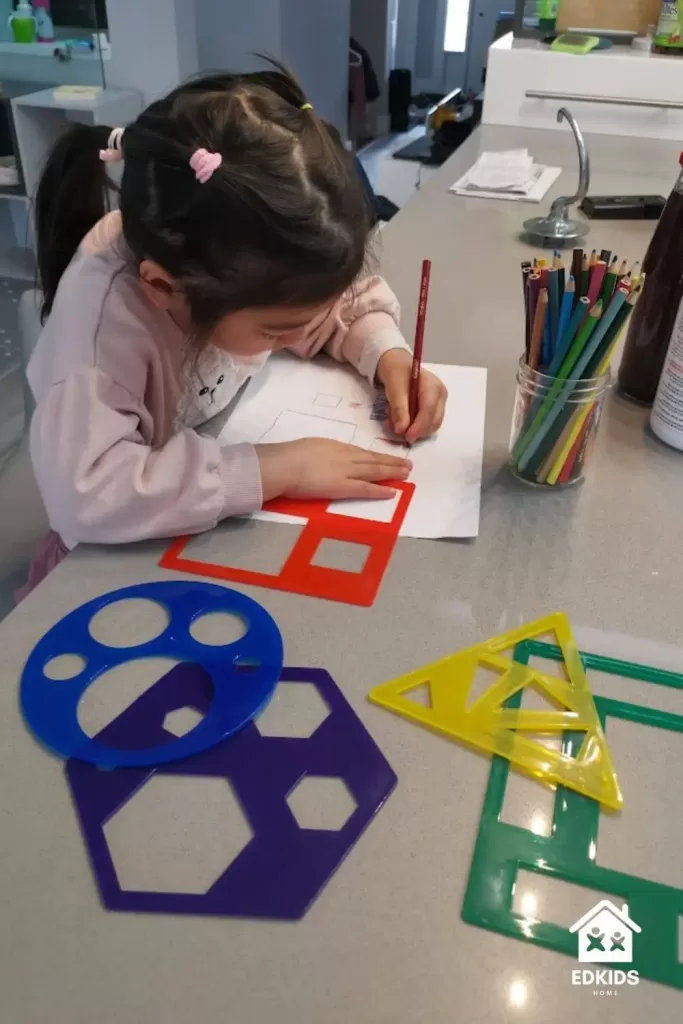
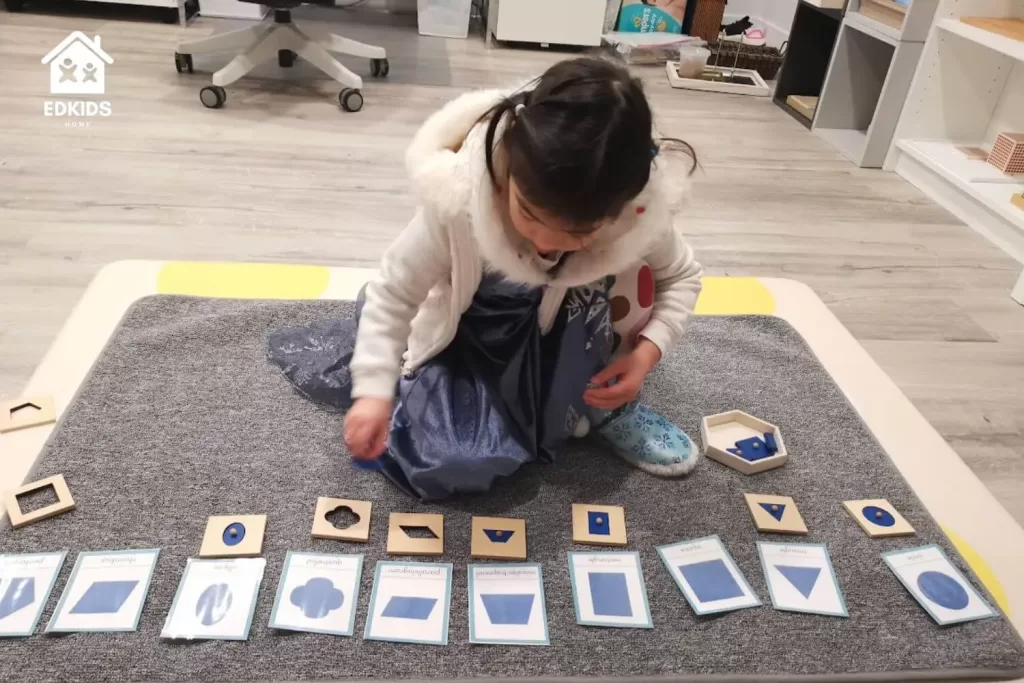
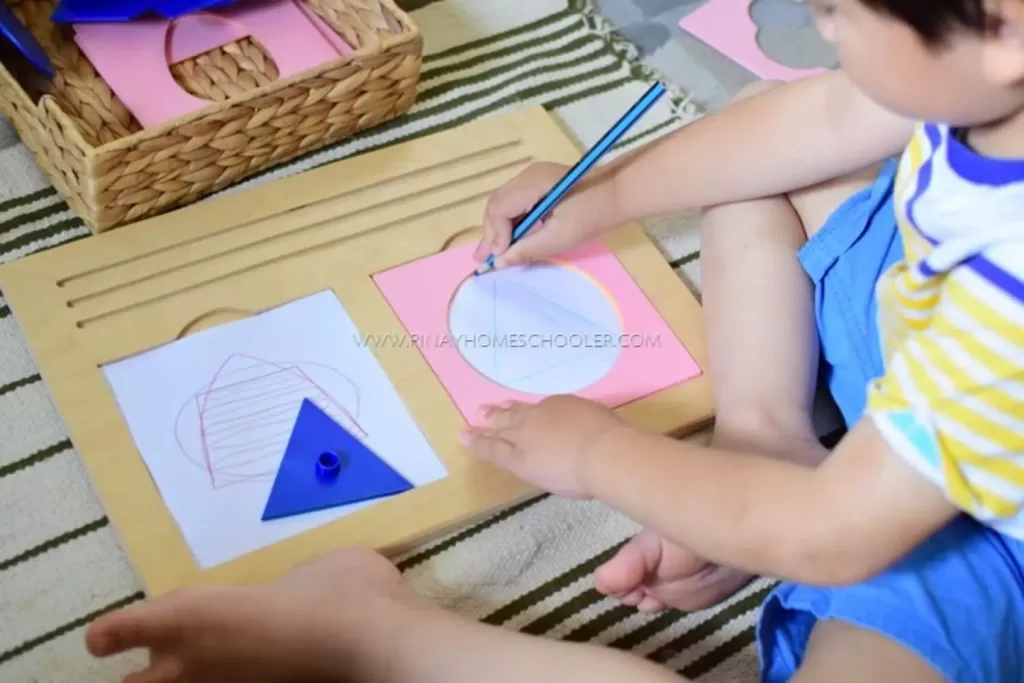
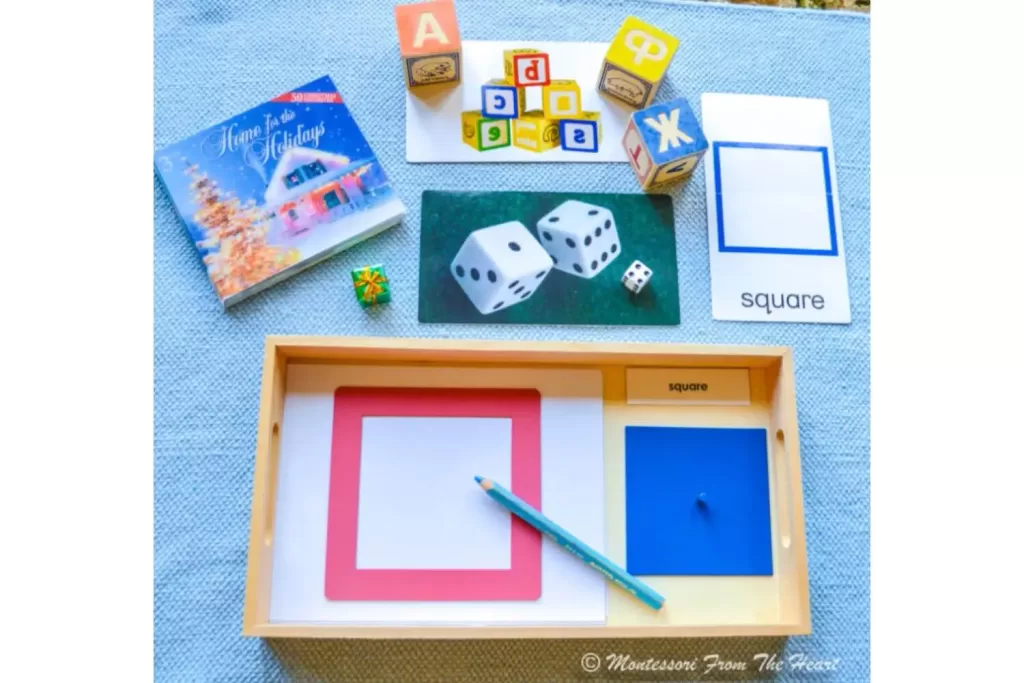
Our Experience
The Stamp Game has been a game-changer in how arithmetic is visualized! Textbooks can't compare to the hands-on experience it offers. I watched in awe as they eagerly arranged and rearranged the colorful stamps, conquering each problem. With units, tens, hundreds, and thousands color-coded, they effortlessly grasped the concept of place values. It's truly amazing!
Let me share a memorable moment: my daughter was facing a challenging subtraction problem. I vividly remember how she used the Montessori Stamp Game, physically moving the tens and units stamps around. With the numbers right in front of her, she confidently solved the problem, and the sheer joy on her face was absolutely priceless! The Montessori Stamp Game has truly transformed arithmetic into an interactive and enjoyable journey for our kids.
Other Math Related Resources
Here are some more resources just for your kids to enjoy math!
Last Thing About Montessori Math Materials
Here is a wrap about my 7 favorite Montessori math materials for children 3-4 years old:
In conclusion, Montessori math materials are an incredible tool for making math come alive for kids! They provide a hands-on and interactive experience that makes learning math enjoyable.
By allowing children to physically manipulate and explore numerical concepts, these materials help them develop a deep understanding of mathematics. This not only fosters a love for learning but also extends beyond the classroom.
So, by incorporating Montessori math materials into a child's learning journey, you're investing in their educational success and nurturing a lifelong curiosity and passion for mathematics. Isn't that amazing?
Tell us what are some of your favorite Montessori Math Materials in our comment box below!
